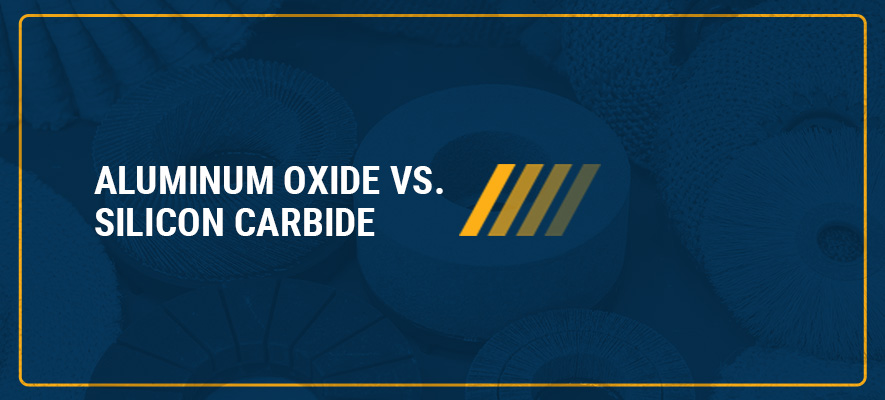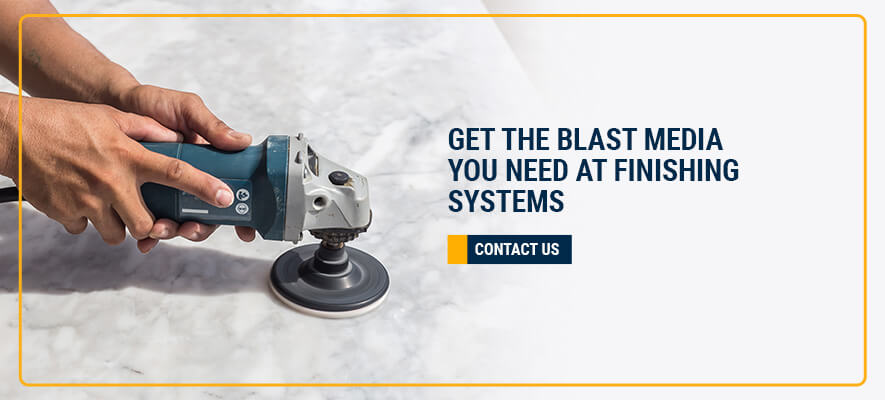Aluminum Oxide vs. Silicon Carbide

Aluminum Oxide vs. Silicon Carbide
Updated: November 24, 2023Blasting media plays a crucial role in industrial and finishing processes, helping to strip, clean, and polish surfaces to achieve a professional finish. Among the most commonly used abrasives are aluminum oxide and silicon carbide. Both offer unique properties that make them suitable for different applications. Understanding their differences can help you choose the right material for your project.
Aluminum Oxide Abrasives
Aluminum oxide is one of the most widely used blasting materials, especially when working with painted surfaces, wood, and various metals. It’s known for its affordability, durability, and long-lasting performance, making it a cost-effective option for many industries. The abrasive comes in three main colors — pink, white, and brown — each with specific uses and advantages.
Pink and White
White and pink aluminum oxide are ideal for achieving smooth finishes, particularly on delicate surfaces like wood and lacquered materials. White aluminum oxide is especially effective in precision work because it generates less heat, reducing the risk of surface damage. Pink aluminum oxide is often used on softer woods or in grinding and sharpening tasks. However, these varieties tend to be less durable compared to the brown version.
Brown
Brown aluminum oxide is the most versatile and cost-effective option. It excels when working with harder materials and offers extended wear due to its semifriable nature. As the grains break down, they sharpen themselves, allowing for efficient removal of large burrs and leaving behind finer particles for a smoother finish. This self-sharpening quality makes it highly recyclable, reducing waste and long-term costs. Brown aluminum oxide is a top choice for steel and other high-tensile materials.
Silicon Carbide Abrasives
Silicon carbide is another popular abrasive known for its sharpness and extreme hardness. It’s commonly used for finishing ceramics, glass, stone, marble, fiberglass, and certain plastics. Its fine, pointed edges allow for quick and efficient surface preparation without requiring frequent replacements, especially on softer materials.
One of the key benefits of silicon carbide is its versatility. It works well in both direct-pressure and suction-based blasting systems. Additionally, it can be combined with aluminum oxide in finishing operations — using aluminum oxide for general cleaning and silicon carbide for polishing. This combination helps reduce wear on the more fragile silicon carbide while still achieving a smooth finish.
Silicon carbide is also safe for use in wet or volatile environments. It doesn’t produce static electricity or significant magnetism, making it a safer option in sensitive settings. Whether friable or non-friable, it offers flexibility in application and extends the life of the abrasive material.
Which Is Better for Grinding Steel: Aluminum Oxide or Silicon Carbide?
When it comes to grinding steel, aluminum oxide is generally the better choice. While silicon carbide is harder and sharper, it's also more brittle, which leads to faster wear on tough materials like steel. Using silicon carbide on steel may require multiple passes to see any real effect, making it less efficient for this purpose.
Brown aluminum oxide, in particular, is ideal for steel due to its durability and ability to provide a smooth finish. For further refinement, pink aluminum oxide can be used after the initial pass to enhance the surface quality.
Which Is Better for Grinding Aluminum: Aluminum Oxide or Silicon Carbide?
Aluminum is a soft metal that requires careful handling during grinding. A combination of aluminum oxide and silicon carbide is often recommended for optimal results. Silicon carbide is excellent for low-tensile strength metals like aluminum, as it minimizes heat generation and provides a consistent finish. However, depending on the application, white aluminum oxide can also be a good choice for precision work without excessive heat buildup.
A common approach is to start with aluminum oxide for initial surface preparation and then use silicon carbide for final polishing. This method ensures efficiency and protects the more delicate abrasive from premature wear.
How to Choose Between Silicon Carbide and Aluminum Oxide
The decision between silicon carbide and aluminum oxide depends largely on the material you're working with. If you're dealing with non-metallic or low-tensile strength materials, silicon carbide is usually the better option. On the other hand, aluminum oxide is preferred for high-tensile strength materials such as steel, bronze, and aluminum alloys.
For precision finishing, combining both abrasives can yield the best results. This technique is not only useful in metalworking but also in woodworking applications where a refined finish is required.

Get the Blast Media You Need at Finishing Systems
At Finishing Systems, we understand the importance of selecting the right abrasive for your specific needs. Our range includes both aluminum oxide and silicon carbide, available in friable, semi-friable, and standard types to suit a variety of applications. Whether you're working with metals, wood, or composites, our experts can guide you toward the best solution for your project.
Contact us today to learn more about our products and how we can support your blasting and finishing goals.
Electric Steering Pump,Electric Power Steering Pump,Electronic Power Steering System,Electric Hydraulic Power Steering Pump
Fuxin Dare Automotive Parts Co., Ltd. (DARE AUTO) , http://www.darepump.com